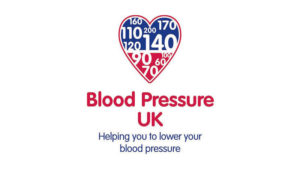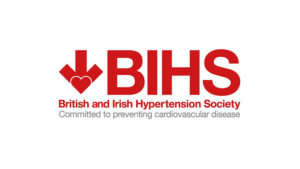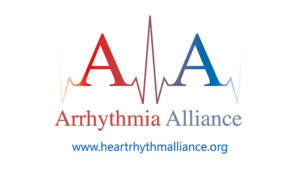In heart failure, heart rate control may improve mortality and the need for hospitalisation. In angina, heart rate control improves symptoms and reduces the need for PCI
Once-weekly exenatide: a new therapeutic option for glucose lowering
The evidence for, and usefulness of, once-weekly exenatide (Bydureon) are discussed in this review. It may be initiated in primary care since it has effects on glucose lowering and global cardiometabolic risk
Validating heart failure registers in primary care: a way to higher QOF payments and better outcomes
We hypothesised that practice heart failure registers may not be complete or robust due to patients not always being allocated the correct READ codes. We set up a project which improved practice heart failure registers. Ensuring practices have robust registers, by improving clinical coding in general practice, means more accurate prevalence levels can inform planning and commissioning of heart failure services.
Thrombolysis for the treatment of acute ischaemic stroke
Obstacles to anticoagulant therapy in people with atrial fibrillation
Atrial fibrillation (AF) is the commonest arrhythmia in the community. The lifetime risk of developing AF is one in six, rising steeply with age over 50 years. People with AF have six times the risk of having a stroke and twice the risk of death compared to those with sinus rhythm.
Management of cardiovascular disease during pregnancy
Between 0.2 and 4% of all pregnancies in western industrialised countries are complicated by cardiovascular disease (CVD), and the number of patients who develop cardiac problems during pregnancy is increasing. Knowledge of the risks associated with CVD during pregnancy and their management is of pivotal importance for advising patients before pregnancy.
Reducing hospital admissions for patients with heart failure: the impact of a Local Enhanced Service
Managing heart failure requires a holistic approach: as well as optimal medical treatment, patients and their families need to have a sufficient understanding of the condition. There also needs to be a service to deliver this care. Heart failure affects about 0.5% of the population, depending on the age of the population, so each general practice has a manageable number of patients. However, the expertise and confidence needed to deliver optimal care to heart failure patients and their families are not widely held in primary care. There is largely a reliance on secondary care to provide community services, led by consultants and delivered by specialist nurses. Within this system patients are usually well served, but sometimes patients fall between the community service and general practice. In Central Manchester there is no community heart failure service. About one in five patients with heart failure were being admitted each year, indicating that heart failure management in the community needed to improve.
The new oral anticoagulants, and their use in stroke prevention
We have three new licensed anticoagulant agents–dabigatran, rivaroxaban and apixaban. Their use for stroke prevention in AF is discussed: primary care is central to their utilisation.
Keeping the blood flowing: new agents to prevent and treat thrombosis
We live in exciting times with the development of several new oral anticoagulant agents, including the recent approval of the direct thrombin inhibitor dabigatran for the prevention of stroke and systemic embolism in patients with atrial fibrillation (AF). Dabigatran, an oral agent with fixed dosing, is an attractive alternative to warfarin which has recently been made available in the UK. What are the implications for UK primary care? Many patients with AF receive substandard anticoagulation and are therefore at risk of stroke. Evidence for its efficacy and its potential place in clinical practice is reviewed.
Introducing the new national strategy for CVD
As many will know, the Secretary of State for Health, Andrew Lansley, announced last December that the government would be developing a new strategy for cardiovascular disease under the direction of Sir Bruce Keogh (NHS Medical Director). As part of this work two Interim National Clinical Directors have been seconded to the Department of Health: me (Professor Huon Gray, University Hospital of Southampton) for Cardiovascular Disease and Dr Damian Jenkinson (Royal Bournemouth Hospital) for Stroke. Both are part-time secondments and together cover the work previously overseen by Professor Sir Roger Boyle, before his retirement last summer.
Heart rate control in people with heart failure: education may improve outcomes
There is emerging evidence that heart rate control is an important element in the management of people with heart failure. The major beta-blocker trials have shown improved mortality and reduced hospitalisation when patients with impaired left ventricular (LV) function are managed with optimal doses. In a meta-analysis of these trials, McAlister et al. have shown a correlation between heart rate control and improved outcomes.1 Beta-blockers may have other actions apart from heart rate control; for instance, they may be anti-arrhythmic or have some other mechanisms for their action. Ivabradine, whose only function is heart rate control, has also shown a reduction in hospitalisation for heart failure.2 Heart rate is additionally an indicator of optimal beta-blockade3, and so may be a proxy for optimal medical treatment.
Recognising stroke and transient ischaemic attack – the role of primary care
Stroke is the third commonest cause of adult death and the leading cause of complex disability in the UK. This article will discuss the importance of the early recognition of stroke and transient ischaemic attack and the role of primary care staff in implementing national guidelines. Practical case study examples are included.





















